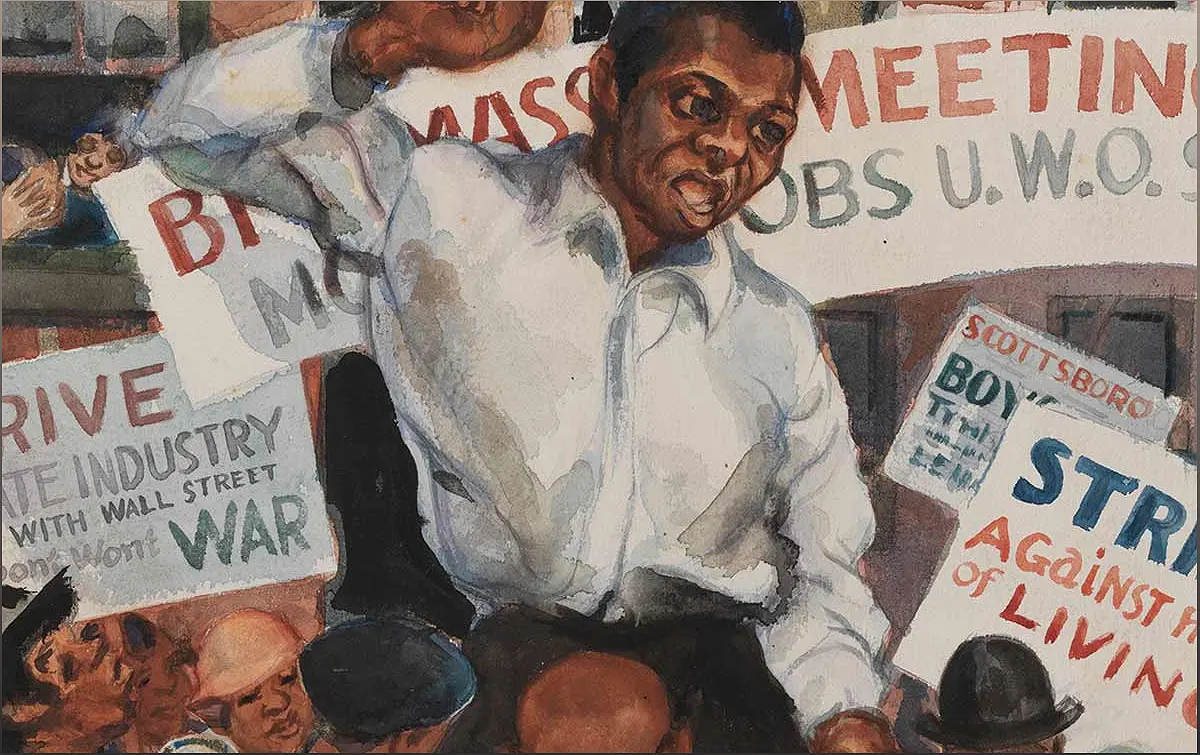Step into the world of 1930s American art and challenge the nostalgic view with Art for the Millions exhibition. Delve into the individual and idiosyncratic visions of artists engaged in left-wing politics and the labor movement. Explore the diverse representation of Black artists and workers, the complexities of union affiliation, and the search for an American cultural identity. Witness the shift towards narratives of technological innovation and industrial progress as the United States emerged from the Great Depression. Get ready for a journey that unveils the hidden stories and contested nature of this pivotal era in American art.
Artistic Engagement with Left-Wing Politics and the Labor Movement
Explore the connection between 1930s American art and socialist, communist, and labor movements.
The art of the 1930s in America became closely tied to socialist, communist, and labor movements. This era is often associated with the artwork created under the Works Progress Administration (WPA) and by artists affiliated with left causes.
These artworks served as testimonies to the hardships of the Great Depression and critiques of the capitalist system. However, there is a tendency to view this art with a sense of homogenizing nostalgia, overlooking the diversity and contested nature of the cultural milieu at the time.
The Metropolitan Museum of Art's exhibition, 'Art for the Millions,' aims to challenge this perspective by showcasing lesser-known works and unexpected objects from the 1930s. The exhibition begins by highlighting the artistic engagement with left-wing politics and the labor movement.
Despite the expected subjects such as factory workers and protests, the artworks on display offer individual and idiosyncratic visions.
Challenging Dominant Narratives: Black Artists and Workers
Discover the inclusion of Black artists and workers in 1930s American art and the complexities they faced.
The exhibition also challenges dominant narratives of the Depression era by including Black artists and images of Black workers. One painting by Ben Shahn, created in 1943, depicts a white and Black welder with a caption encouraging full employment and voting rights.
However, the positioning of the Black worker in the composition raises questions about his marginalization and the uneven application of assistance programs for Black Americans during this time.
The exhibition further explores the complexities of union affiliation for Black workers through the work of Dox Thrash, a Black painter and printmaker. His painting from 1940 portrays a larger-than-life Black orator giving a speech, while the surrounding figures display skepticism.
This reflects the ambivalence towards organized labor and the individual politics of artists during this period.
Unveiling the Forgotten: Women in the Workforce
Highlight the overlooked representation of women in the workforce during the 1930s and their unique experiences.
Despite the diversity of the artworks on display, the representation of the working body in 'Art for the Millions' remains consistently male, overlooking the millions of women who entered the workforce during the Depression.
However, there is an exception in a lithograph by Elizabeth Olds titled 'Burlesque,' which depicts a row of women in leotards, highlighting the alienated labor of entertainment.
The Search for an American Cultural Identity
Explore the quest for an American cultural identity in 1930s American art and the challenges faced by artists.
The exhibition also explores the search for an American cultural identity during this period. Artists and critics grappled with the question of what made American art uniquely American.
This search resulted in a cacophony of contested expressions, including a focus on American folk art and representations of the American West. However, these representations often excluded Indigenous perspectives and claims to the land.
From Hardship to Progress: Technological and Industrial Innovation
Witness the shift towards narratives of technological and industrial innovation in 1930s American art.
As the United States emerged from the Depression, the exhibition shows a shift towards narratives of technological and industrial innovation. The art and design of this period celebrated consumer goods and futuristic visions of progress.
The exhibition includes sleek and seductive designs, such as a Bakelite baby monitor and a streamlined meat slicer.

